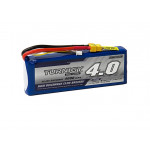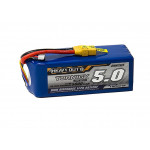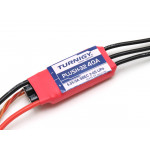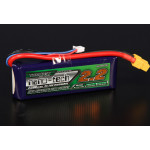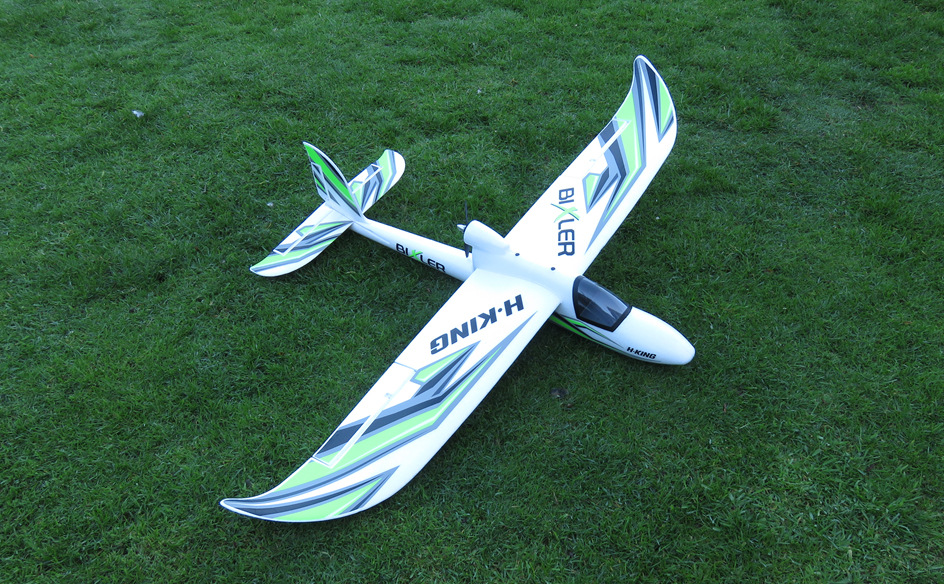
Introduction
My first ever 'proper' fixed-wing model was a Bixler V2. That was back in early 2014 and it became the 'plane that helped me to get back into flying a fixed-wing.
It was such a great experience that these models and have become one of my top suggestions for pilots looking to learn to fly. Among my close flying buddies, we've been through about 4 Bixlers between us with mine surviving intact to be being handed onto another pilot to help them learn. But, even with all of the other models that I have access to, I've missed having a Bixler in the fleet so when then chance to get this newly updated version of the original came up I jumped at the chance. Before I go any further it's worth taking a moment to talk about what I mean by 'the original'.
The original Bixler was about for a while and updated to the V1.1 around in late 2012 that included a number of improvements to the very first design (changes to the cockpit, improved servo placement, and strengthening to the main body). This newly updated version is the latest update to that classic model. In addition to this model, you'll also see two other members of the Bixler family on the HobbyKing website. The Bixler 2 (the one I bought and learned to fly with back in 2014) and the larger Bixler 3. Both of the other models have a few more touches that include flaps and landing gear (with the Bixler 3). This second version of the V1.1 from back in 2012 is confusingly also called the V2 so make sure you're ordering the right one when you click on that 'Buy' button.
Specs

The Bixler family of models are all super-stable, capable models that can fly super slowly and also has enough power for loops and rolls. The original version of the V1.1 Bixler had an adequate motor and prop setup but wasn't what you'd consider a 'hot-rod'. This updated version has a 2212-100kv motor swinging a compact 6x4” prop and a 20amp speed controller that provides plenty of power and makes the model more responsive to the throttle.
The model size is the same with a wingspan of 1400mm and a length of 925mm. The new decals make give the model an updated look with not only the bright green and black decals on the upper surfaces and body but also using the black stripes on the underwings to aid visibility. The model comes installed with the servos and the build (more on that in a moment) is quick and easy. A larger EPO model like this is a great size. Those large shaped wings covered in those decals make for a very low loading and the model soars and floats just like the other Bixlers in the range. I used a 3S 2200mAh pack right in the nose and that got the center of gravity spot on with the manual and gave a great flying experience.
Building
The model comes in a few parts and the box is smaller than many of the models you'll order in this size category. You'll need a Philips screwdriver and some foam safe glue to put it together as this isn't supplied in the box. The manual on the build process is clear and easy to follow with the tailpieces needing to be glued in place and the wings held in place with two long bolts that install through the top of the body. The only other things you'll need to do on the build is screw on the control horns onto the control surfaces and connect up the servos using the supplied linages. There are all the cables you need in the box and even a strip of Velcro for the battery.
Setup for your radio should be easy too. This is a classic '4 channel' model with the throttle, aileron, elevator, and rudder. A 4 channel receiver would work but I used an X8R. One of the nice touches is the small magnetic hatch in the belly of the model above the servos hidden away in the tail that controls the elevator and rudder. It quickly allows you access to those and helps you make sure that they are set up mechanically.
Flying

Flying the model I remembered why I loved my Bixler. This is one of those models that I thought I'd outgrown as a pilot, but anything that gives you this much joy needs to be in my fleet. On my maiden flight, I needed a touch of down elevator and a little touch of trim on the aileron to counter the roll from the prop and it flew like it was on rails. Those high set wings, loaded lightly with those curved tips provide tons of lift and lots of natural stability so the model behaves more like a slope-soarer or glider than a powered model. Flying at just 15% throttle the model flew gracefully at a fast walking pace. With the power off, had a very gentle glide slope, stalls are very gentle too with the nose dropping in a very manageable way.
After a few circuits in the maiden, I was happy that everything was working well and blipped the throttle for some speed for a cheeky loop. I was surprised at how quickly it gathered speed and how cleanly it flew the maneuver. No need to correct anything, it tracked through the loop easily. This is one of those models that make you look good. Once I knew it has a little more 'poke' than the older version then I had a fun flight soaring and then diving under power for loops and rolls as well as climbing vertically for stall turns. When I'd had enough (and my face was starting to ache from the grinning) I cut the power and floated it into the ground to come to rest gently on the grass. Yep, this is a Bixler!
Summary
By going back to the 'original' and updating it with the new graphics it's given this model a new lease of life. That more powerful motor and prop setup is a great balance of efficiency and power and I'm a fan of the clear style canopy used on this model, I wasn't keen on the solid metallic grey canopy used on the updated Bixler 2 released at the end of 2017. There are a few niggles though, but it does feel like I'm nitpicking here. There is no protection on the later models for the belly of the plane, a plastic 'skid' if you will. That is a great idea as it protects the belly from damage if you not landing on something nice and soft. It may be useful to pop some tape along the bottom of the model to take those scrapes and knocks. There is a spare prop in the kit (very pleased to see that in this kit). Models that have a propeller on the front of the model tend to end up breaking then when the nose of the aircraft catches the ground on a landing.
With the Bixler family, you don't have that problem but a spare is always welcome in case of hanger rash or losing a prop in flight (remember those pre-flight checks!). The inclusion of a modular canopy that would have made it easy to support FPV would have been a great touch too. With the stability and characteristics of this model (prop out of the field of view) it's also a great plane to try fixed-wing FPV with. I've ended up making my own but this should be in the box or available to buy. I would have also liked to see an easier system for attaching the wings on the model.
On the Bixler 3, the wings are held in place with two plastic thumb screws making the removal of the wings a 30-second job. It's a shame that this feature didn't make it onto the V1.1 V2 model. The ability to quickly breakdown the model for transport and carrying would have been great for those of us that like to fly from a clifftop. With this being a 'mature' design and lots of more modern planes and wings to choose from these days, it's easy to dismiss all of the Bixler family as 'just a trainer'. It's one of those models that can do almost anything – trainer, FPV plane, aerobatics, endurance, gliding, cheap slope-soaring. Now I've rediscovered how fun a Bixler is again, I won't be donating this one to a new learner, this one is mine!
Written by Painless360


